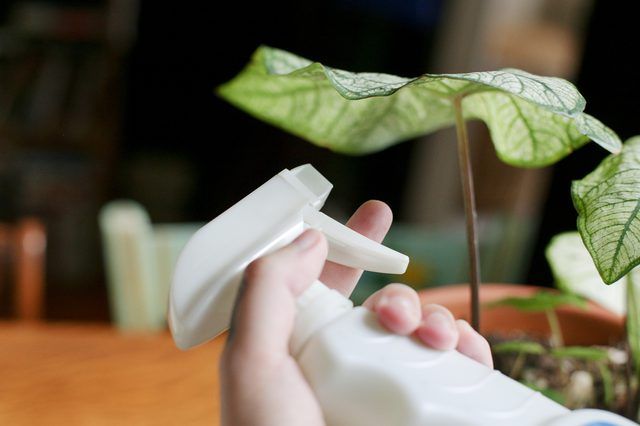Bulbs
Flower Basics
Flower Beds & Specialty Gardens
Flower Garden
Garden Furniture
Garden Gnomes
Garden Seeds
Garden Sheds
Garden Statues
Garden Tools & Supplies
Gardening Basics
Green & Organic
Groundcovers & Vines
Growing Annuals
Growing Basil
Growing Beans
Growing Berries
Growing Blueberries
Growing Cactus
Growing Corn
Growing Cotton
Growing Edibles
Growing Flowers
Growing Garlic
Growing Grapes
Growing Grass
Growing Herbs
Growing Jasmine
Growing Mint
Growing Mushrooms
Orchids
Growing Peanuts
Growing Perennials
Growing Plants
Growing Rosemary
Growing Roses
Growing Strawberries
Growing Sunflowers
Growing Thyme
Growing Tomatoes
Growing Tulips
Growing Vegetables
Herb Basics
Herb Garden
Indoor Growing
Landscaping Basics
Landscaping Patios
Landscaping Plants
Landscaping Shrubs
Landscaping Trees
Landscaping Walks & Pathways
Lawn Basics
Lawn Maintenance
Lawn Mowers
Lawn Ornaments
Lawn Planting
Lawn Tools
Outdoor Growing
Overall Landscape Planning
Pests, Weeds & Problems
Plant Basics
Rock Garden
Rose Garden
Shrubs
Soil
Specialty Gardens
Trees
Vegetable Garden
Yard Maintenance
How to Care for an Elephant Ear Plant
How to Care for an Elephant Ear Plant. Two plants commonly go by the name elephant ear. Taro or elephant ears (Colocasia esculenta) grows in U.S. Department of Agriculture plant hardiness zones 8 through 11, while elephant ears (Alocasia spp.), grow in USDA zones 10 and 11, both have large, glossy leaves that can grow up to 2 feet long and have...
Two plants commonly go by the name elephant ear. Taro or elephant ears (Colocasia esculenta) grows in U.S. Department of Agriculture plant hardiness zones 8 through 11, while elephant ears (Alocasia spp.), grow in USDA zones 10 and 11, both have large, glossy leaves that can grow up to 2 feet long and have similar care needs. Both related species do best in partial shade and rich soil.
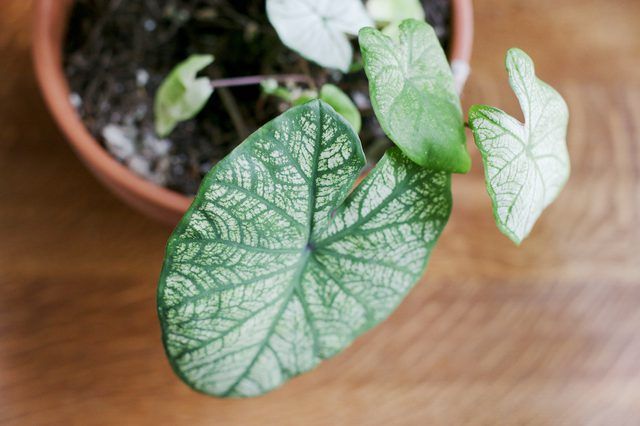
Plenty of water and light feedings keep elephant ears healthy. Plants grown near pond or water feature margins, where the soil remains moist or wet at all times, don't require watering, but those growing in garden beds watering every one to two days so the soil doesn't dry out. Provide 1 to 2 inches of water at each watering, or enough to thoroughly wet the soil 8 to 10 inches deep. Water once monthly with 1 tablespoon of a soluble 24-8-16 fertilizer diluted in 1 gallon of water during the spring and summer.
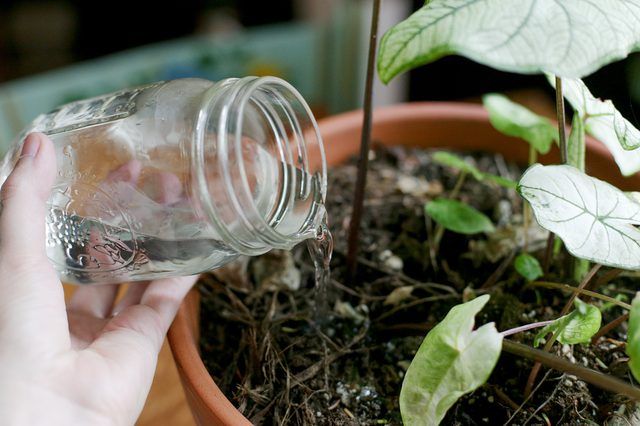
In colder climates, grow elephant ears in pots. Use pots with a bottom drainage hole and a moist, water-retentive soil. You can sink the pots to their rim in a garden bed in spring after the danger of frost has passed, and lift and bring the pots indoors for winter. Plants in pots require the same watering and fertilizing schedule as garden-grown plants, although they may need more frequent watering during hot or dry weather. Bring the pots indoors before the first frost and keep them in a cool room with bright, indirect sunlight until spring.
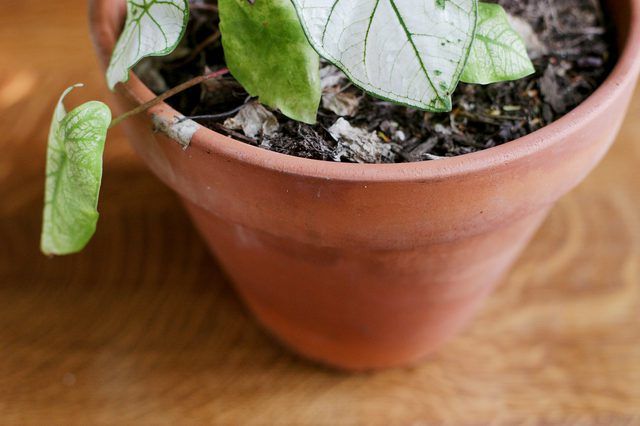
Dividing the spreading tubers every two or three years gives you more plants and prevents overcrowding. You can divide yearly if you live in a colder climate and lift the tubers each year for overwintering indoors. Loosen the soil around the tubers in fall with a spading fork, and then lift the roots out of the soil. Remove the side tubers from the main central tuber, discarding any that appear rotten or shriveled. Replant immediately 3 inches deep and 24 inches apart, or cut back the foliage to a 4 inches tall for overwintering indoors in colder climates. Dry the tubers for 24 hours before packing them in a box filled with peat moss. Overwinter the tubers indoors in a cool area. Some varieties of elephant ears grow from thick roots called rhizomes instead of tubers. Grow these types in pots if you must overwinter indoors, because they don't tolerate yearly digging and storage well.
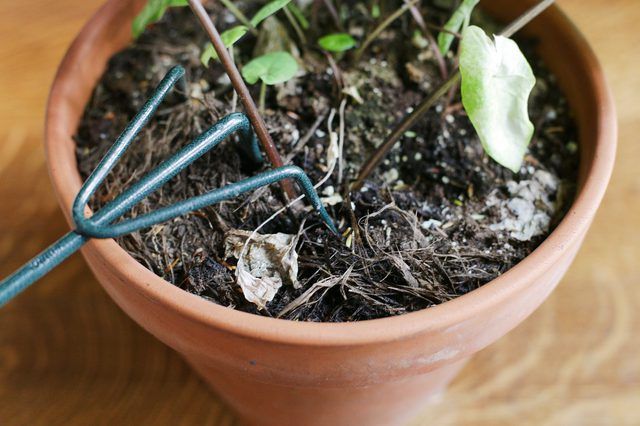
Few diseases or pests plague elephant ears, although spider mites are sometimes a problem for indoor plants. Spray the leaves with water to dislodge the mites, focusing on the undersides of the leaves where these small pests tend to congregate. Both types are toxic if eaten, although taro varieties are edible if you cook them first. Keep the plants away from children and pets. Taro varieties can become invasive in warm climates, so don't plant them if they're a problem in your area.
